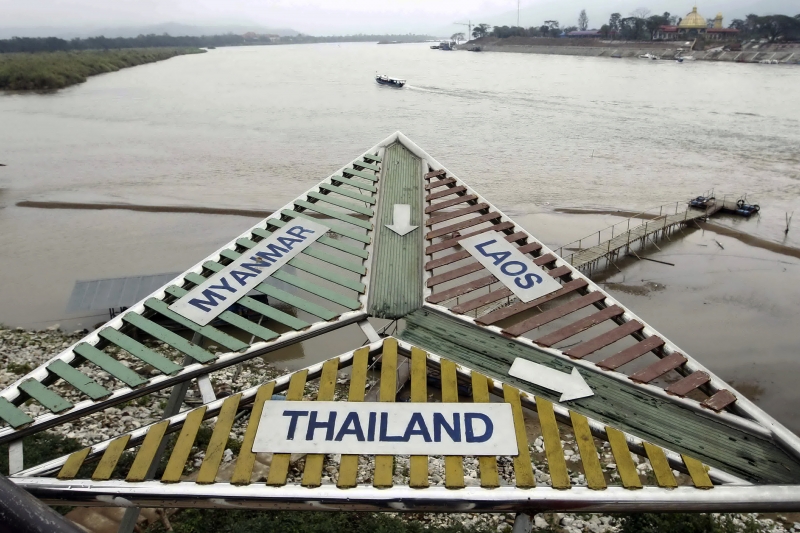
Courtesy of Council on Foreign Relations
The January-February issue of Foreign Affairs magazine, which is published by the Council on Foreign Relations (CFR), presents a special package on the new “Up-and-Coming Markets” in the global economy. The six markets featured in this special issue are Mexico, South Kroea, Poland, Turkey, Philippines, and the Mekong region. The latter is a region in Southeast Asia with over 2 trillion dollars in GDP size and comprised of Brunei, Indonesia, Malaysia, the Philippines, and Singapore .
According to Gideon Rose, editor of Foreign Affairs magazine, and Jonathan Tepperman, its managing editor, the current issue offers “a compelling look at the fundamental issues likely to drive success or failure in some of the global economy’s newest and brightest stars in the years to come”. Contributors to this special Foreign Affairs package include:
CFR Senior Fellow Shannon K. O’Neil on Mexico:
“Over the last three decades, Mexico has made the transition from a commodity- and agricultural-based economy to one dominated by manufacturing and services. It is also finally moving forward on a host of overdue domestic reforms. Internationally, the country is firmly situated within North American supply chains, augmenting its global competitiveness. And these advantages should only grow with Mexico’s involvement in both the Trans-Pacific Partnership (TPP) and the Pacific Alliance, two of the most dynamic free-trade negotiations of this century.”
Peterson Institute Executive Vice President and Director of Studies Marcus Noland on South Korea:
“Fifty years ago, the country was poorer than Bolivia and Mozambique; today, it is richer than New Zealand and Spain, with a per capita income of almost $23,000. For fifty years, South Korea’s economy has grown by an average of 7 percent annually, contracting in only two of those years. In 1996, South Korea joined the Organization for Economic Cooperation and Development, the club of rich industrialized countries, and in 2010, it became the first Asian country and the first non-G7 member to host a G20 summit.”
Chair for the Department of Political Science at Northeastern University Mitchell A. Orenstein on Poland:
“The Polish economy…meanwhile, has grown rapidly for two decades—at more than 4 percent per year, the fastest speed in Europe—and garnered massive investment in its companies and infrastructure. Poland’s is now the sixth-largest economy in the EU. Living standards more than doubled between 1989 and 2012, reaching 62 percent of the level of the prosperous countries at the core of Europe. All of this led the World Bank economist Marcin Piatkowski to conclude in a recent report that Poland ‘has just had probably the best twenty years in more than one thousand years of its history.’”
Financial Times Correspondent Daniel Dombey on Turkey:
“Turkey is still on track to grow faster than much of the industrialized world in the coming years. In October, Jim Yong Kim, the president of the World Bank, hailed the country as ‘an inspiration to many developing countries.’ But the fact remains that Turkey’s success could yet unravel. To live up to its economic potential, Turkey will have to overcome two main challenges: its reliance on fickle foreign funds and the intrusion of heavy-handed politics into its economic life.”
CFR Adjunct Senior Fellow Karen Brooks on Indonesia and the Philippines:
“Giant Indonesia soared during the last half decade, boasting high growth, low inflation, an extremely low debt-to-GDP ratio, strong foreign exchange reserves, and a top-performing stock market. But it is the Philippines, the region’s other archipelago, that is now providing the biggest upside surprise. The Philippine economy expanded by 6.6 percent in 2012, exceeding most economists’ predictions, and was among the fastest-growing economies in the world in the first half of 2013, expanding by 7.6 percent.”
Chulalongkorn University Professor Thitinan Pongsudhirak on the Mekong Region:
“Together, the mainland Southeast Asian economies now constitute a consumer and labor market of over 300 million people, with rising incomes and a combined GDP that could exceed $1 trillion by 2020. Add in maritime Southeast Asia—Brunei, Indonesia, Malaysia, the Philippines, and Singapore—and you get the Association of Southeast Asian Nations (ASEAN), a forty-six–year-old bloc that is home to a combined GDP of over $2.2 trillion and 620 million people.”
And head of emerging markets and global macro at Morgan Stanley, Ruchir Sharma, with a discussion of why past predictions have been wrong:
“Today, more than five years after the financial crisis of 2008, much of that euphoria and all those acronyms have come to seem woefully out of date. The average growth rate in the emerging world fell back to 4 percent in 2013. Meanwhile, the BRICs are crumbling, each for its own reasons, and while their summits go on, they serve only to underscore how hard it is to forge a meaningful bloc out of authoritarian and democratic regimes with clashing economic interests. As the hype fades, forecasters are left reconsidering the mistakes they made at the peak of the boom.”